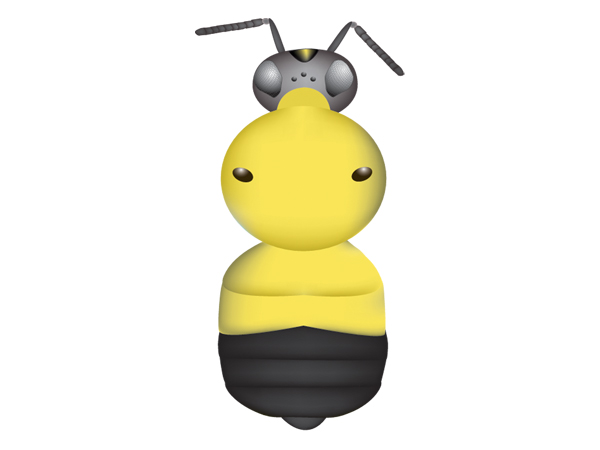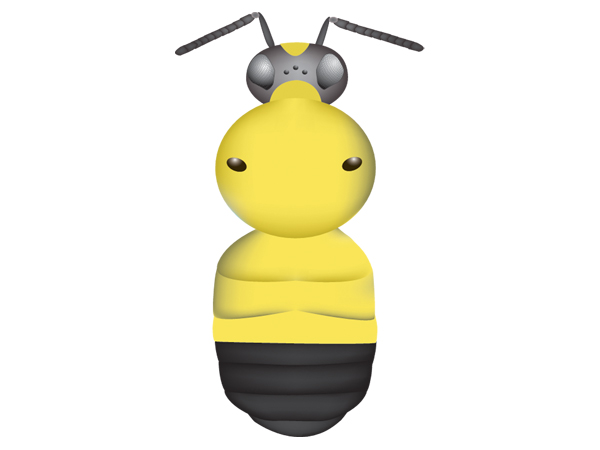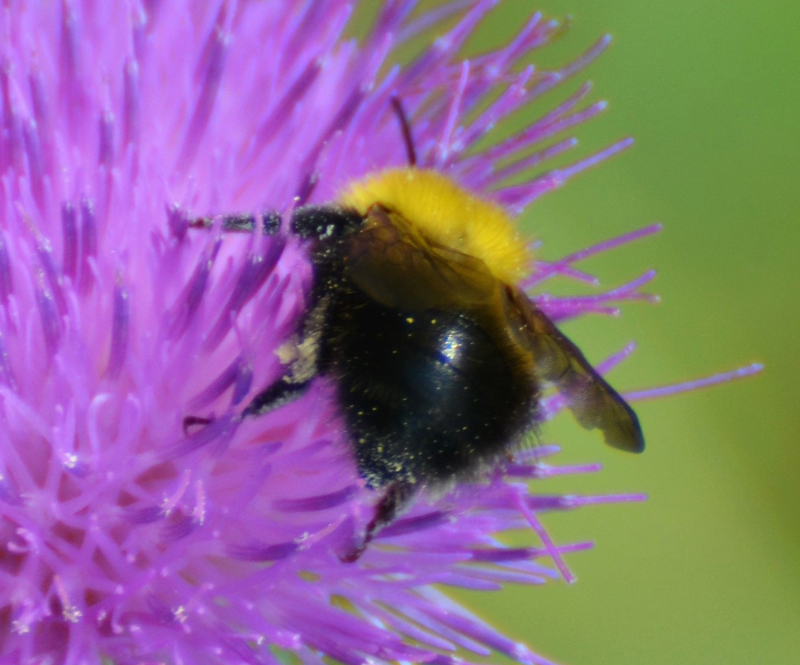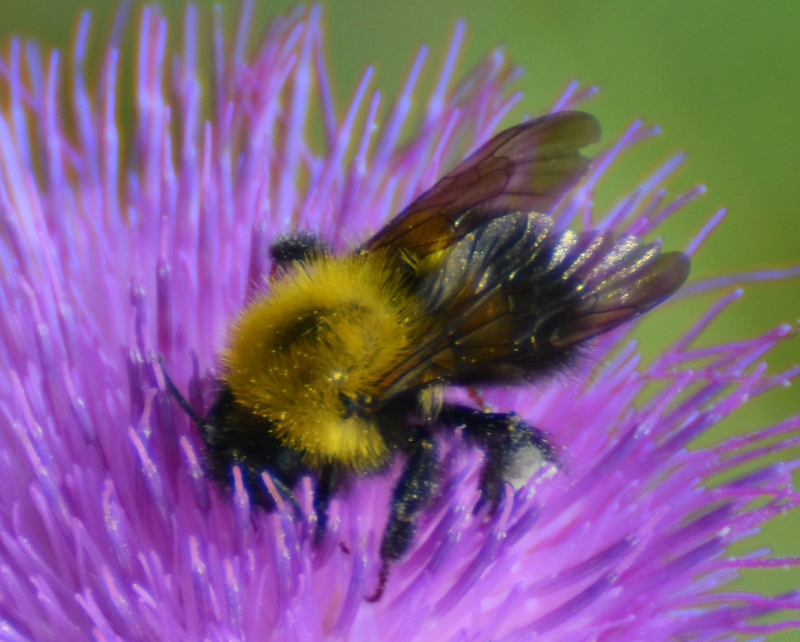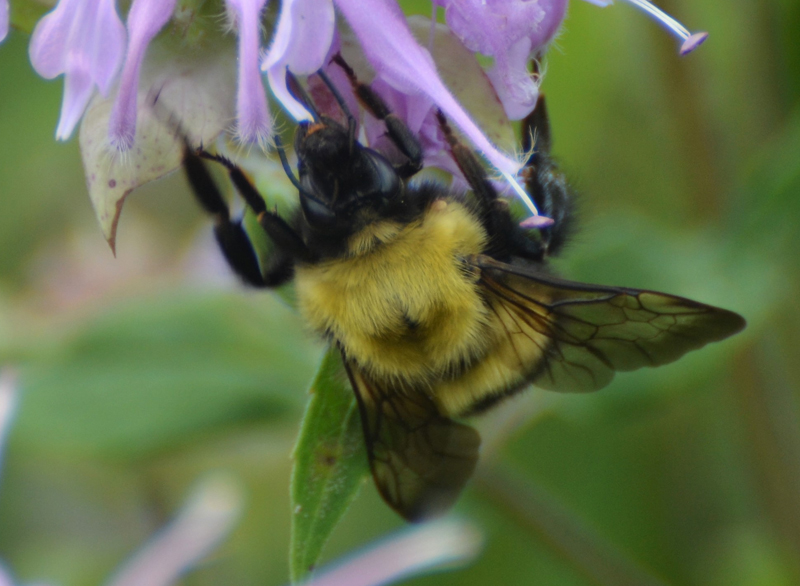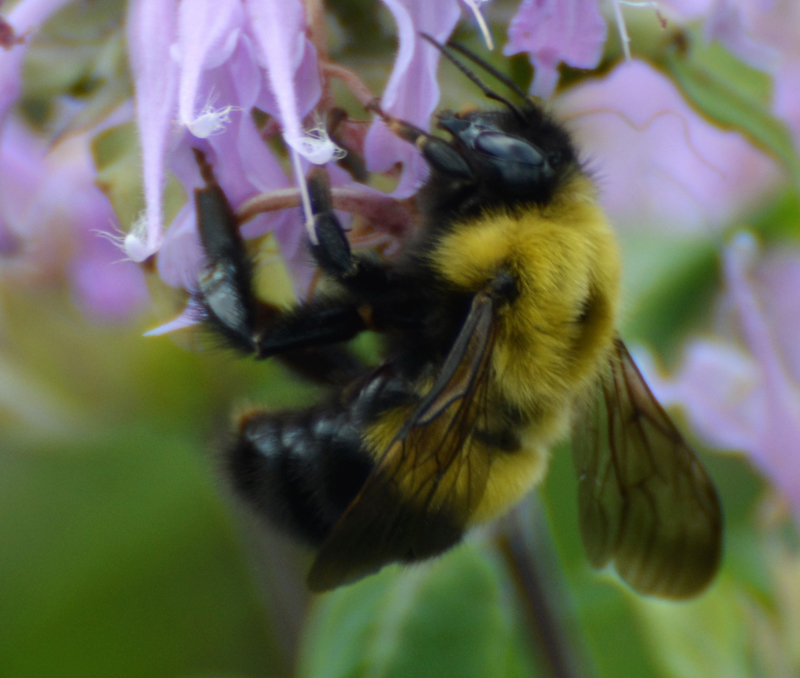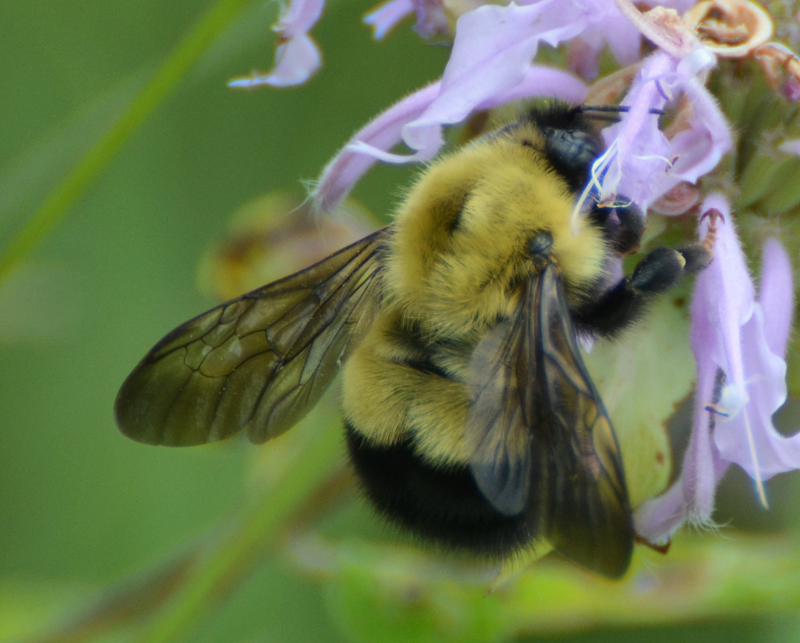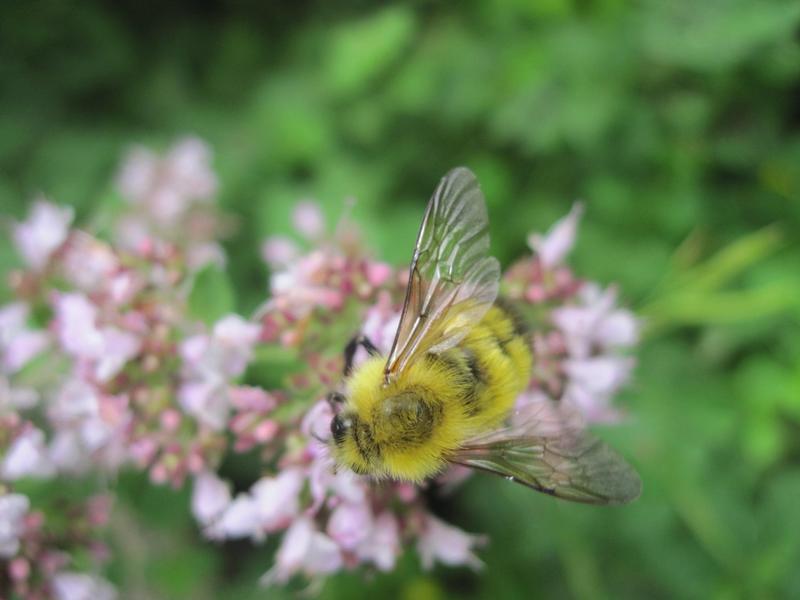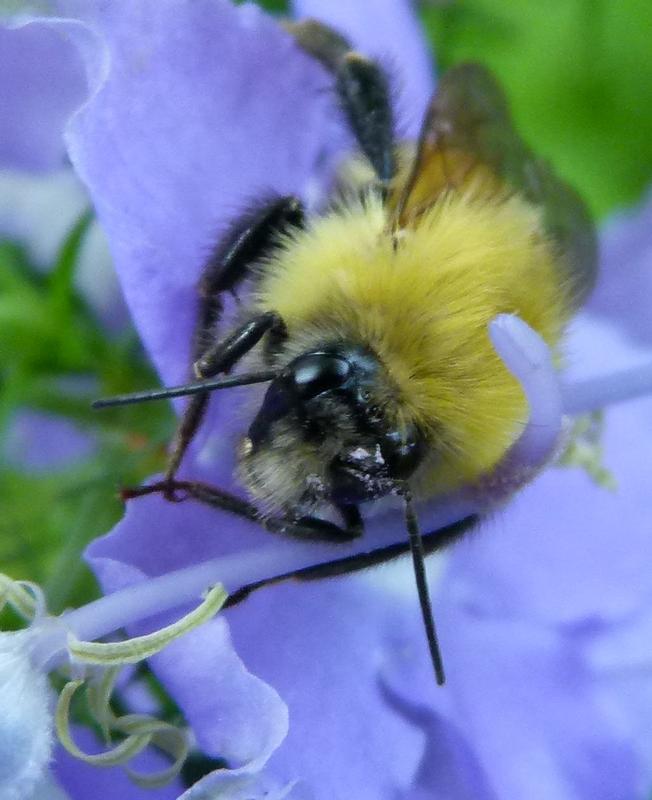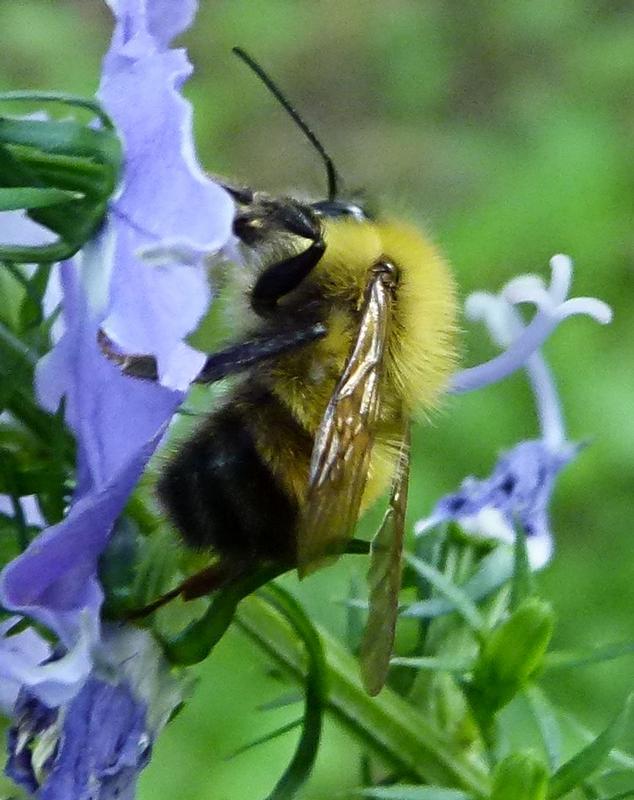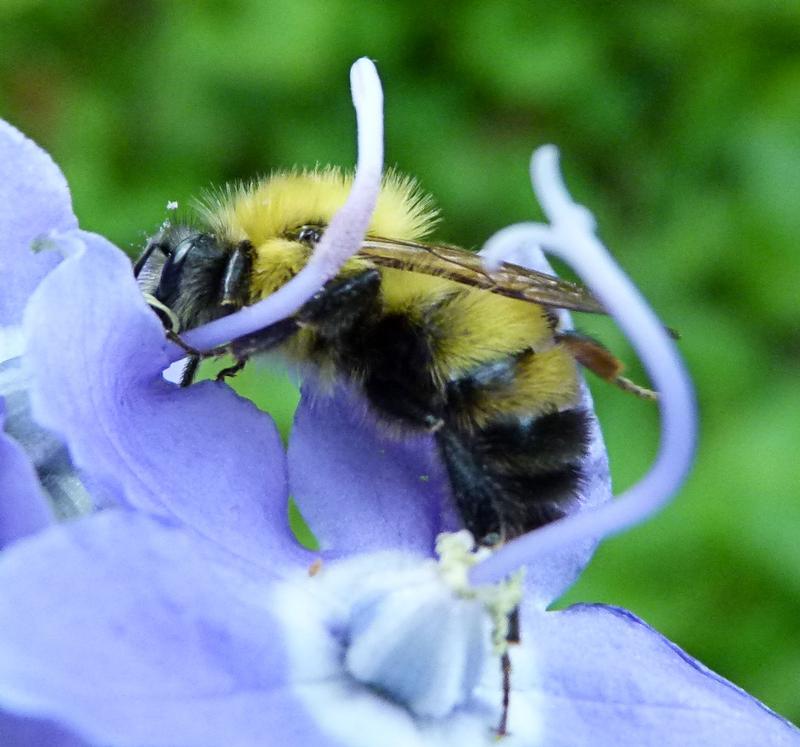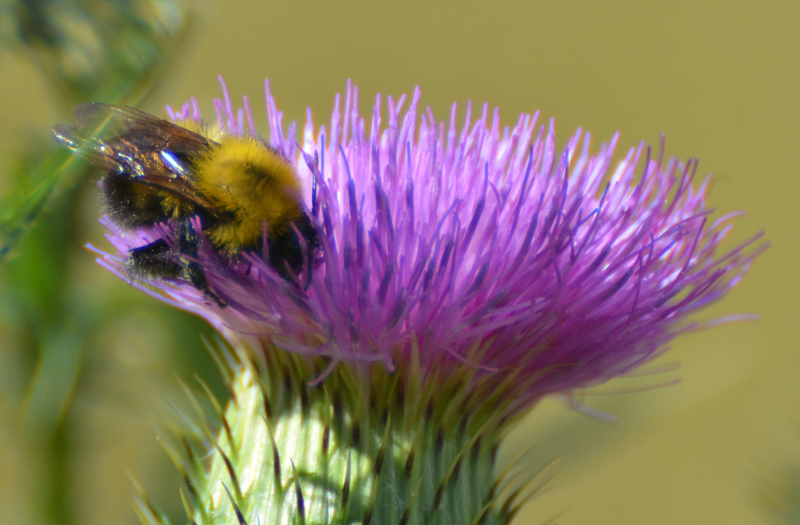
Status-Global/State:
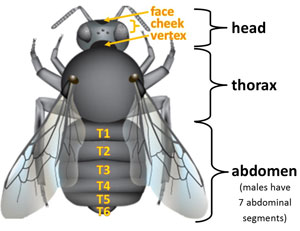
Identification:
- Worker – Face with black or intermixed hairs and yellow vertex. Thorax usually all yellow between the wingpads and often black below the wingpads on the sides. Abdominal segments T1-2 yellow, and T3-5 and T6 black. Some morphs are all yellow or yellow in the center of T3 and have white/light colored fringe on T5-6.
- Queen/gyne – Similar to workers including the variability in color patterns. Queens/gynes are larger than workers and appear earlier in the season.
- Male – Face yellow or intermixed and vertex yellow. Thorax usually all yellow . Abdominal segment T1-3, and T4-T7 black. Some morphs have a completely yellow abdomen, some are yellow T1-2 only, and some are intermixed or have fringe on T4 and on T7.
- Other distinguishing features – Hair long and often amber yellow colored. Difficult to distinguish females from half-black bumble bee (B. vagans) and Sanderson's bumble bee (B. sandersoni).
Similar Wisconsin Species:
Similar bumble bee species in Wisconsin are twospotted bumble bee (B. bimaculatus), common eastern bumble bee (B. impatiens), Sanderson's bumble bee (B. sandersoni), and half-black bumble bee (B. vagans) (Colla et al. 2011, Williams et al. 2014).
Description of Habitat/Range:
Known habitats include wooded areas, urban parks, gardens, and wetlands (Williams et al. 2014). Nests have been mostly found underground (Colla et al. 2011, Williams et al. 2014).
Nectar Plants
The confusing bumble bee is a medium-tongued species (Williams et al. 2014). Nectar plants include Campanula, Cirsium (thistles), Hydrangea, Lonicera (honeysuckles), Melilotus (sweet clover), Penstemon, Pontederia, Prunus (plums/cherries), Ribes (gooseberry/currants), Rhododendron, Rubus (blackberry), Tilia, and Vaccinium (blueberry) (Williams et al. 2014, Colla et al. 2011).
Data from verified B3 observations [updated 2/28/2024].
Flight Season:
In Wisconsin, the few records are mostly from July and August. Rangewide, queens start emerging in April and enter diapause by September (Colla et al. 2011).
Literature Cited:
Colla, S., Richardson, L. and Williams, P. (2011) Bumble Bees of the Eastern United States. A product of the USDA Forest Service and the Pollinator Partnership with funding from the National Fish and Wildlife Foundation.
Hatfield, R., Jepsen, S., Thorp, R., Richardson, L. & Colla, S. 2014. Bombus perplexus. The IUCN Red List of Threatened Species 2014: e.T44937925A69005102.
Williams, P.H., Thorp, R.W., Richardson, L.L. and Colla, S.R. (2014) The Bumble bees of North America: An Identification guide. Princeton University Press, Princeton.
